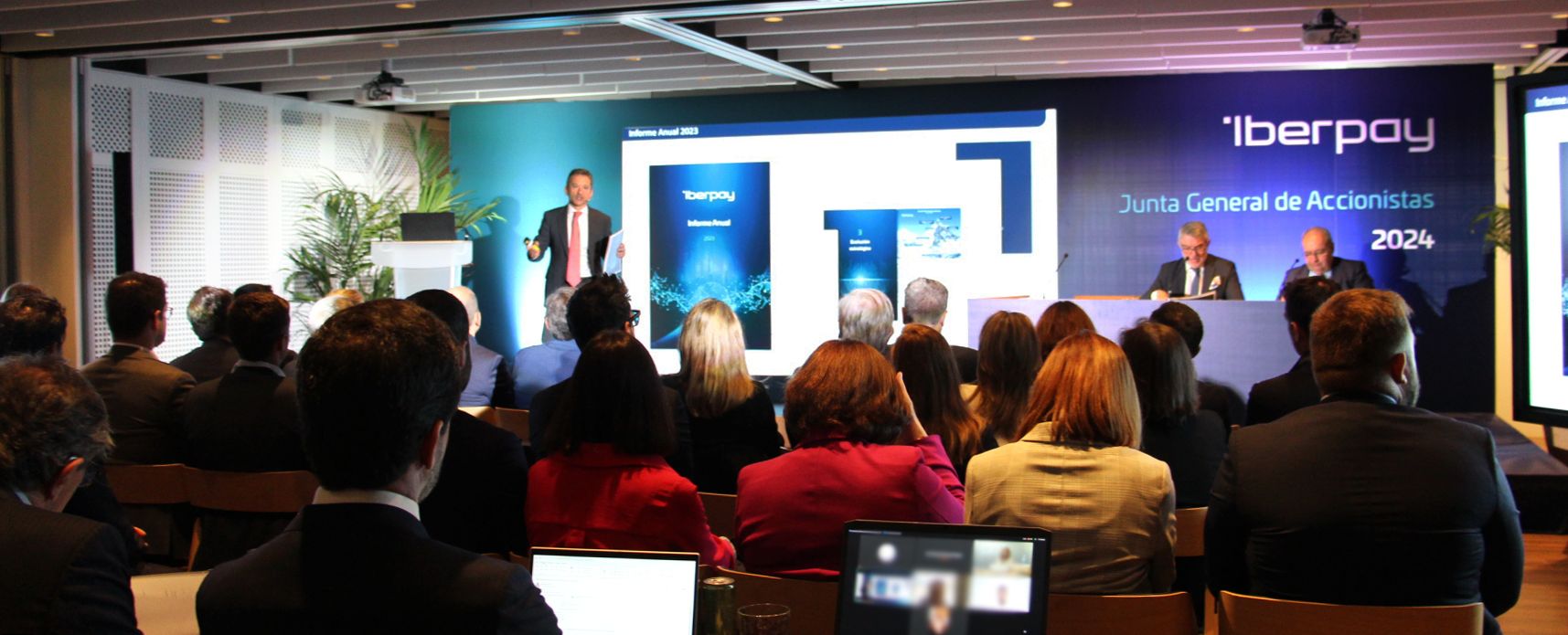Iberpay News
Digital Money
October 02 2023
Digital money makes its way into the payments' world.
A new form of money is emerging with the latest technological advancements. It complements cash and other current means of payment, and their coexistence provides a wider range of access to simple payment options for society.
The irruption of what is known as digital money unlocks a variety of opportunities, spanning from guaranteeing greater inclusion, to satisfying the needs for instant payments and digital services.
What is digital money?
In an increasingly digital world, new needs and opportunities arise. Also, new forms of money emerge, leading to a growing adoption of digital money. Digital money is considered as any form of monetary exchange which is issued digitally and that fulfills the functions and properties attributed to money, such as: a unit of account, an accepted means of payment, and a store of value.
It is a new form of money, alternative to cash, that is usually supported by account entries in a central platform or DLT technology (Distributed Ledger Technology), which allows the automation of payments and is behind the emergence of cryptocurrencies, stablecoins and digital money issued by a central bank (CBDC). DLT technology enables the decentralization of the transactions or information with which financial infrastructures operate, and improves their resilience and traceability.
Types of digital money
Native digital money can be classified according to different criteria. The following categories of digital money can be considered the new forms of money, alternative to traditional (notes, coins and bank deposits). We could highlight the following basic types:
- Cryptocurrencies: They use cryptography for both, their issuance and for the circulation and control. Bitcoin is the main reference after its creation in 2009. It paved the way for a large variety of cryptocurrencies, such as Ethereum, Cardano or Solana. But the high volatility of its value and its low acceptance plays against it, which means that it does not serve as a unit of account or as a means of payment.
- Stablecoins: They arise to mitigate the main drawbacks of cryptocurrencies, such as high volatility and lack of support. In general, their value is pegged to that of a fiat currency, such as the dollar or the euro, or a safe-haven asset, such as gold.
- Tokenized bank deposits: An innovative way to store and transfer value. Deposits are represented by tokens and function like traditional ones, with the advantage that they can be programmed to provide more security to certain financial transactions with digital assets.
- CBDC (Central Bank Digital Currency): Form of digital money issued by a central bank, which is the digital representation of the fiat money of a country or an economic area. It is issued and backed by the corresponding central bank, as is the case with banknotes and coins.
Digital money becomes a clear opportunity for the financial system. It could imply an opening and democratization of investment in certain assets, providing access to users who were previously excluded from such investments due to entry barriers.
The digitalization of money provides the sector the opportunity to capture new business by launching more efficient and innovative products, and satisfy the needs of synchronization between the delivery of a product or service and its associated payments, providing more security and transparency to users. A key step in financial innovation that generates more efficient, secure and agile banking services.
Tokenization and its opportunities.
Another important technological advance that can have a great impact on monetary systems is the tokenization of all types of assets. Among these may be included financial assets and money itself, as well as the transactions that can be carried out with these tokenized assets.
But what is tokenization and what is its purpose?
Tokenization can be defined as the digital representation of physical or traditional assets on a DLT network, which can also be divisible, cumulative or programmable. This type of digital tokens contains all the data that represents the asset, having the ability to be exchanged multilaterally between the participants of these DLT networks without centralized control. For example, in tokenization of real estate assets, the need for a notary could potentially be eliminated, and the real state asset could be distributed among different owners, to which they wouldn't have access to in an individually form.
The traditional financial system is immersed in numerous asset tokenization initiatives. A paradigm shift to improve current operational processes and their settlement.
The advantages are many, but the industry notable values the following:
- Developed in a decentralized and cross-border market that offers the possibility of making transactions faster and more securely. Technology plays in favour, in this case, of the traceability of a transaction, which reveals another of its great benefits: to avoid fraud precisely due to its nature and digital trace.
- Without a doubt, it increases efficiency. The need for legacy intermediaries is reduced, shortening settlement time of the asset and generating significant cost savings for its issuance, among others.
- Related to data traceability, technology provides a solid foundation in which transparency is gained for all parties involved.
- Finally, another strong feature of tokenization is improving regulatory compliance. The risk of error is reduced, making it easier to manage rigorous compliance requirements by programming standards directly into smart contracts, even at the token level.
The European Union has become a pioneer worldwide by promoting regulation with the MiCA Regulation, which provides legal certainty to the sector, supporting innovation and protecting users. This regulation came into force in June 2023 and its general application will be gradual until 31st December 2024.
The new regulation establishes requirements for cryptoasset issuers and cryptoasset service providers. The former are required to provide complete and transparent information on the cryptoassets they issue. And it imposes mandatory registration to providers, and requires a series of security measures to prevent money laundering, among its main novelties.
Use cases in the sector
The sector is working on multiple use cases to test the viability of asset tokenization and its commitment as an alternative or complement to cash. An additional form of money that can coexist in the global payment system. The European Central Bank is studying the creation of a digital euro, and it already seems that in the sector it is taken for granted that the money tokenization provides greater benefits in an eventual wholesale CBDC (wCBDC), which would provide security and maximum guarantees to wholesale use cases that the financial sector is developing in DLT networks.
In parallel, the Bank of Spain has launched an experimentation programme to validate the use of digital tokens for the settlement of wholesale payments and securities transactions. A testbed for a wCBDC in which to simulate transactions of financial assets settlement in central bank money.
Iberpay, within the framework of its strategic plan, has been working for more than four years and promoting different sectoral initiatives and proofs of concept in this field, with the main Spanish banks and in collaboration with supervisory authorities.

Services
April 30 2024
General Shareholders' Meeting 2024
On 25 April, Iberpay held its General Shareholders' Meeting, one of the most important annual events of our company. We reviewed the year 2023 and the strategic evolution of the company. We also presented the 2023 Annual Report and the keys to a new 2024-2025 Strategic Plan for the payments sector.

Instant Transfers
February 05 2024
The great potential of instant credit transfers
The new European Regulation on Instant credit transfers aims to generalise their use among citizens, companies and public administrations, exploiting all the potential to achieve their strategic objectives.
Subscribe to Iberpay’s newsletter
Find out what's new in the world of payments and stay up to date with the industry trends.